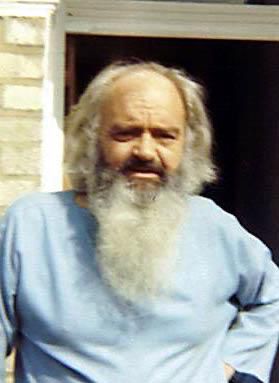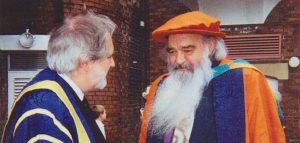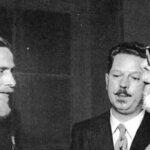
An Introduction
Stafford Beer was a highly successful manager, consultant, and author. He advised multi-billion dollar corporations, and several governments, including the US Congress. He held a number of professorships, published around 300 papers and twelve books, and was president of several global organisations working with systems and cybernetics.
But all of this in no way defined the man.
Here is Brian Eno:
“He was all hair and brains: full of life, fuller of opinions, intimidatingly fast and yet encouraging. He spoke to me not as a student but as a peer. This was demanding : his mind moved quickly.”
Ref: Think before you think p 9.

In 1975 he moved to Wales, exchanging his large house in London for a stone built two room cottage without running water and his Rolls-Royce for an old Land-Rover. Material possessions, he wrote “ were in my way”. He was deeply spiritual and believed societal change “can be generated only by spiritual renewal of the self”. Again, Brian Eno put it well :
“He saw in cybernetics a resolution of his spiritual and scientific personalities, a way of turning science towards the liberation of humanity”
(Think p 10.)
He was involved in both science and art, wrote poetry, played strange musical instruments, played games with stones on the beach with my kids, loved fish and chips, and wrote extra-ordinary books. He was warm and welcoming and, along with everyone else that knew him, enriched my life enormously.
Beer was interested in many (if not all) areas. His output was enormous. As David Whittaker writes in Think before you Think:
“Many of these writings are of exceptional importance for such diverse fields as philosophy, psychology, sociology, mathematics, ecology, politics, economics, ethics and epistemology”
Best known is the Viable System Model: a cybernetic approach to organisational structure inspired by the way that the body works. The work at national level in Chile in 1971 remains an inspiration.
Stafford’s second major body of work is Team Syntegrity AKA Syntegration. A meeting protocol based on the geodesic dome, designed to ensure everyone has a voice and no-one can dominate the outcome.
His art and poetry were original and inspired: his Requiem paintings had to be viewed in a specific order, determined by lines on the ground based on the enneagram: a nine-pointed shape used by Sufis.
Viable System Model
A short introduction into the Viable System Model and a few Videos with Stafford Beer to get started.
Syntegration
An event format called a Syntegration, normally oriented for collective and participatory decision making on crucial issues for organisational identity, development or policy implementation.
Cybersyn
The Cybersyn project, started 1971 under Salvador Allende, aimed to steer the economy of Chile using cybernetic principles. The project aimed to acquire the benefits of cybernetic synergy for the whole industry, while developing power for the workers at the same time.

Cybernetics: A Brief History
Organisational Cybernetics (OC) applies the principles of cybernetics to the diagnosis and design of social living organisations.
Recordings
Recordings of lectures and presentation over the years
Art
Poetry was one of his Stafford Beer’s loves; he had a good grasp of Anglo-Saxon and would read from Chaucer, pointing out the contemporary parallels.
In Memoriam
In memory of friends and fellow cybernetics who are no longer with us
Resources
Interviews
Angela Espinosa interviews people with personal knowledge of Stafford Beer. Interviews on YouTube.
